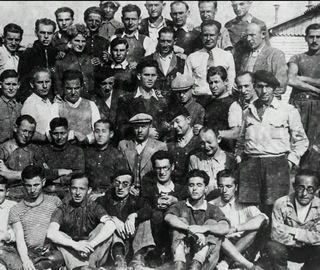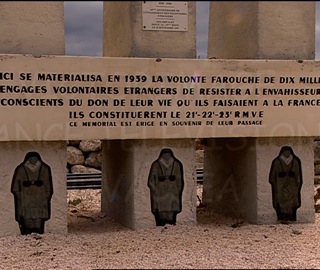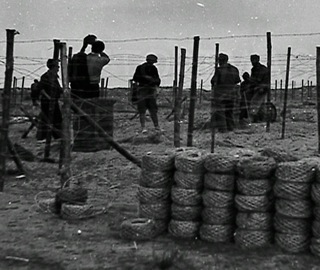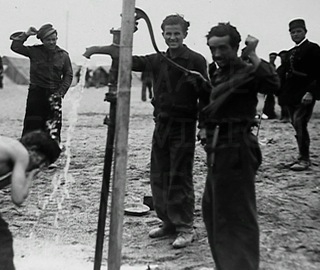



.....................FRANCE TÉLÉVISIONS / UEVACJ / EA
The defense of republican values that helped their integration into the French nation.
Despite this surge of patriotism, the head of the army exhibits profoundly ambiguous behavior. A confidential note warns against the incorporation into the regular army of undesirable persons, with questionable loyalty. They are directed to the foreign legion and included in units specifically created for them.
The 21 th - 22 th - 23 th - Régiments de Marche des Volontaires Étrangers.
The 11 th - 12 th – Regiments Étrangers d’Infanterie.
The 13th Demi-Brigade la Légion Étrangère.
The enlistments continued through May 1940 and the volunteers were scattered in the regiments already established in the Foreign Legion, in North Africa, the Levant and even Indochina. Clearly, the GHQ didn’t expect very much from these units composed by two groups, Jews and Spanish, with specific behaviour and mentality. Making soldiers out of these heterogeneous troops, was not an easy task.
The provision of equipment and weaponry was clearly inadequate and obsolete.
In the barracks, at Barcarès near Perpignan, of 21 th - 22 th - 23 th RMVE, the volunteers are dressed in ragtag khaki, blue horizon, blue hunter, wearing distorted “képis” , berets, fez, and wrinkled caps. Area residents call them "the Salvation Army."
Armament: Lebel guns of the Rif war, strapless, replaced by the string, hence the nickname given by the Nazi propaganda radio Stuttgart "Regiments Ficelles”.
VOD AVAILABLE ON
 |
|
.....................FRANCE TÉLÉVISIONS / UEVACJ / EA
Producers : JF DIDELOT & A. BREUVART
Authors : JP RICHARDOT & R. MUGNEROT
Director : R. MUGNEROT


